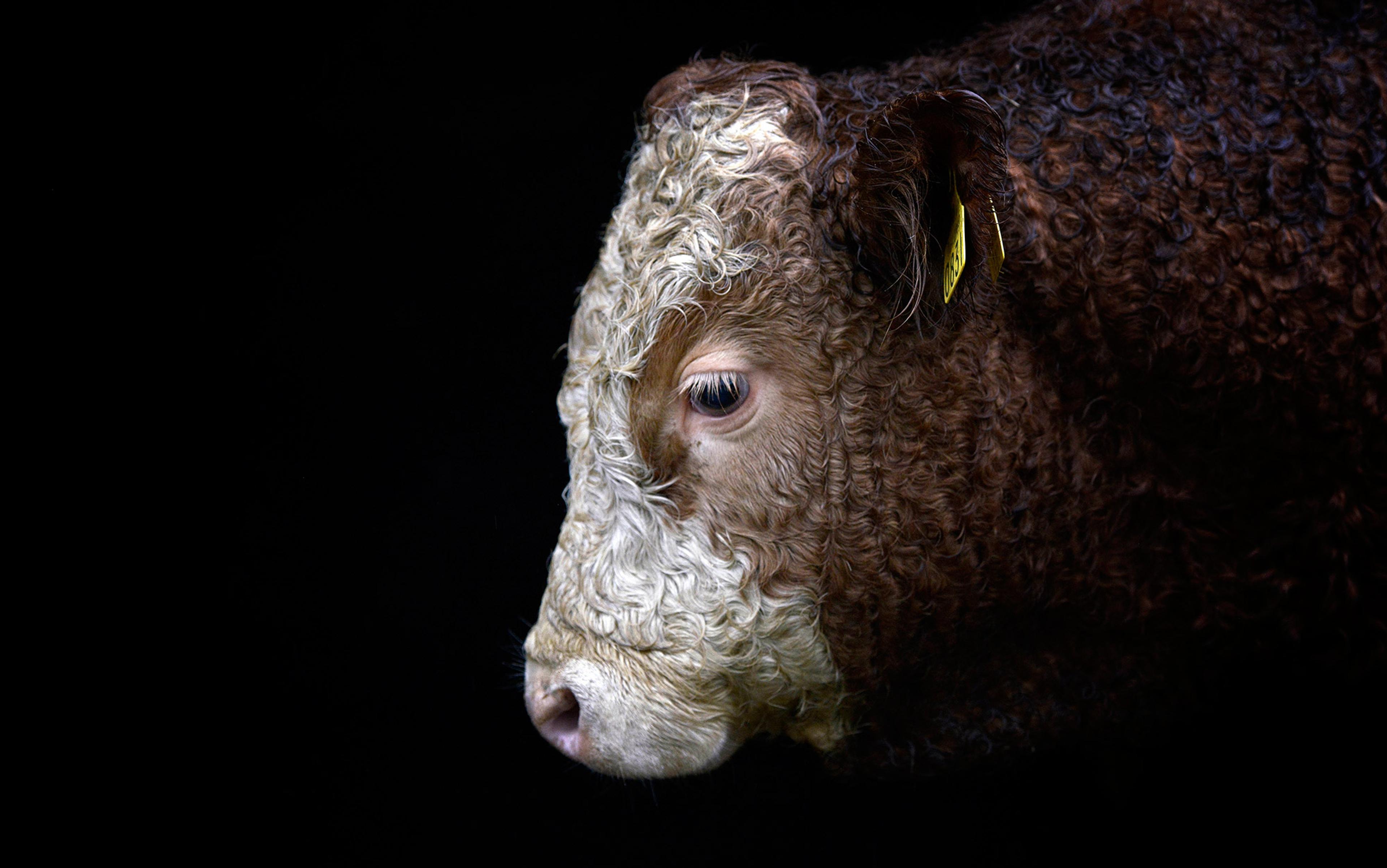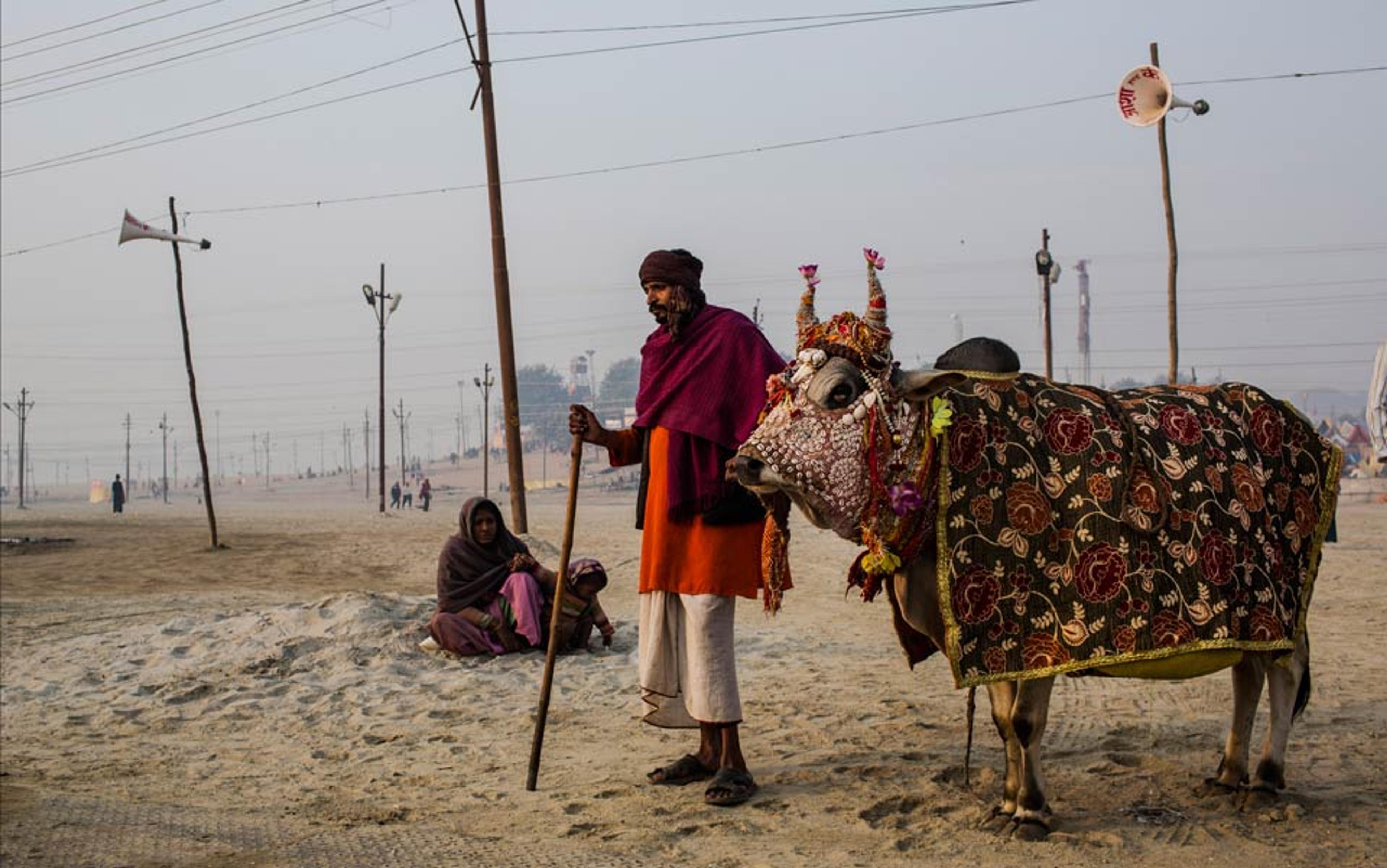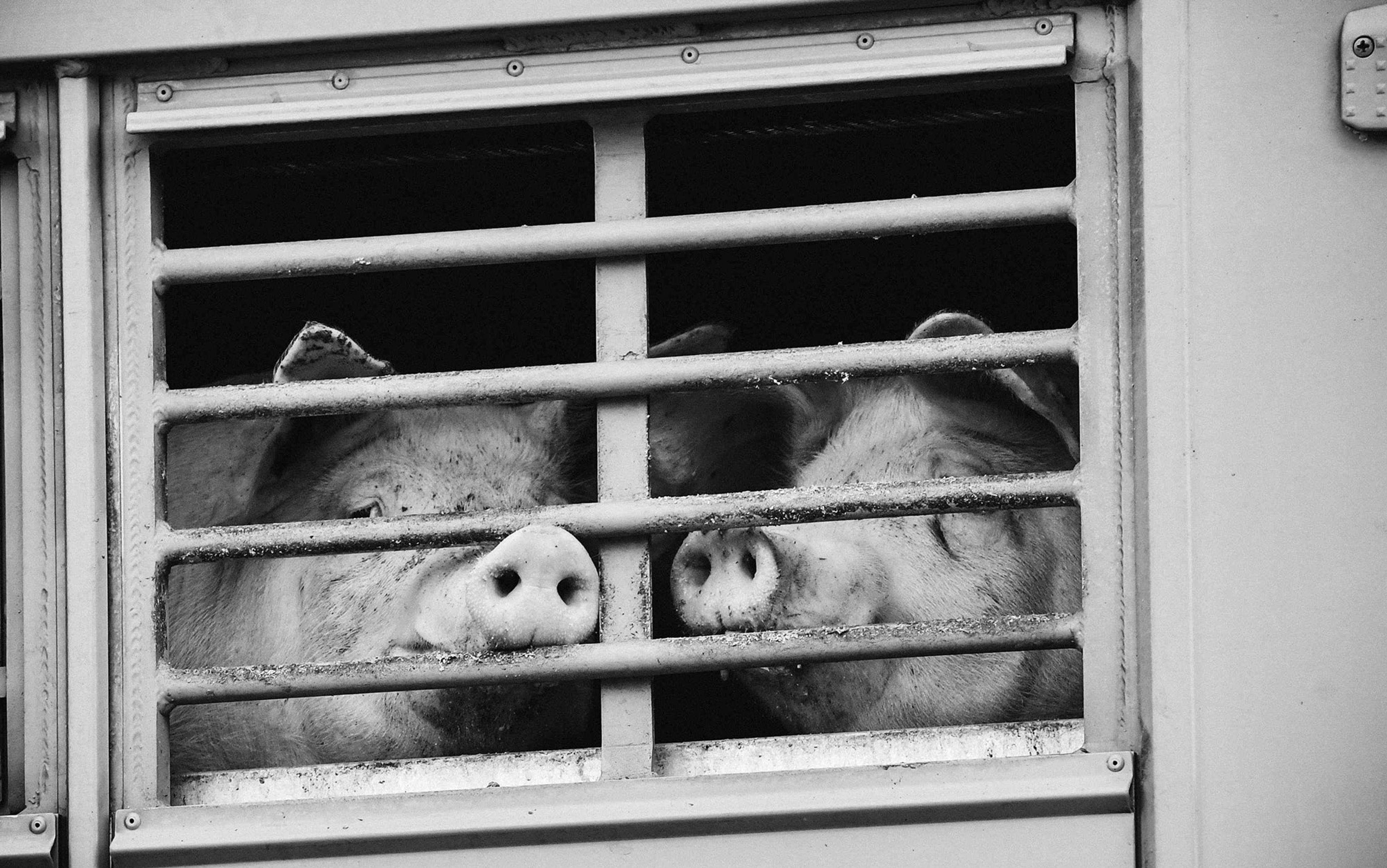Domestic pigs, the kind portrayed in hot-pink neon above barbecue joints, curly tailed and carefree, have prodigious memories. In problem-solving with computers, they match wits with little kids and win. They are able to plan ahead, and they live in complex social communities. They recognise other pigs as distinct individuals.
Pigs aren’t just cerebral, though: they have heart. When others are in distress, they can express concern and act with empathy. A description of pig behaviours, derived from scientific experiments and compiled by Lori Marino of the Kimmela Center for Animal Advocacy and Christina M Colvin at Georgia Institute of Technology is so impressive, you might think it was about chimpanzees, elephants or whales.
We eat pigs, though, and we eat them on a scale unparalleled in comparison with the rate at which we consume other brainy mammals. According to the United Nation’s Food and Agriculture Organization, pork is the most consumed meat in the world.
Barbecue is a cultural obsession in many countries, as is bacon, whether served straight up or in more recent innovations such as bacon chocolate and bacon vodka. Plus, once satiated with real bacon, some might even retire to bed after brushing with bacon-flavoured toothpaste.
We value the taste of pigs far more than we value the lives of pigs. Exceptions include pig celebrities, whose personalities are known and cherished, and whom we assign to a different, protected, pet-like non-consumable status. Esther, a 650 lb ‘wonder pig’ who lives in a house with Derek Walter and Steve Jenkins in Ontario, Canada, is a ‘public figure’ on Facebook with more than 1.1 million followers.
Or consider Christopher Hogwood (named after the famed English conductor and musicologist), a pig who lived in a barn at the home of Sy Montgomery and Howard Mansfield in New Hampshire from his infancy until his death at age 14. Christopher grew to a size even larger than Esther, and through Montgomery’s memoir The Good Good Pig (2006) became a poster pig for porcine cognition and emotion.
Montgomery describes how a belly rub in the sun from her, or dinner leftovers from a local chef, plunged Christopher into a state of utter delight visible to all: he telegraphed this rapture through sound (‘unh-unh-unh!’) and body posture. At those moments, he became the ultimate mindful mammal, one who dwelled entirely in the present. But Christopher didn’t live only in the present any more than we do. He built nests, not in a rote instinctual way, but in fussy anticipation of his own needs for soft-hay comfort. His memory for individual humans – his own complex social community – was excellent. Two young children, once neighbours, continued to visit him at irregular intervals even after they moved to another state. ‘He still remembered the little girls next door,’ Montgomery told me, ‘when they had been away not only for a pretty long time, but during a period of adolescent growth in which just a few months will make a big difference – in what you look like, how tall you are, what your voice sounds like, what you smell like.’ Christopher’s ‘voice became softer and lower’ when interacting with people who were visibly sad, a feat of perspective-taking that suggests an empathy response.
Of course, storytelling about pigs as individuals invites people to think differently about pork and bacon. But what does science – the kind of science reviewed by Marino and Colvin – say? That question has preoccupied me for several years.
Some science begins with the presumption that pigs are not particularly intelligent or empathetic animals. Two years ago, a group of swine researchers led by the animal scientist Sophie Brajon then at the Université Laval in Quebec published the paper ‘The Way Humans Behave Modulates the Emotional State of Piglets’. The research is part of a corpus showing that the emotional state of animals, including farmed animals, biases their information-processing. Yet the conclusion reached, that gently handled pigs showed more positive emotional states than roughly handled or neglected ones, conveys a larger message: that we have a way to go before it’s the starting point, not the big reveal, that farmed animals have emotions and are affected by how we treat them.
A good deal of the science writing on pigs aims to increase awareness of pigs’ capacities so that they are treated better. The biologist Donald Broom and colleagues at the University of Cambridge discovered that pigs, with only five hours of experience, can use a mirror to find the location of a hidden object. Mirror-naïve pigs search behind the mirror to find the treat, but after five hours’ practice, 10 of 11 pigs turned away to find the real location of the savoury items within 23 seconds. (A fan blew the food smells away, so that smell cues didn’t confound the process.) This is a cognitive feat because both the concept of the food and its position must be remembered, as interpreted from the non-real-world view of the mirror.
In one study, the pigs were better than the toddlers at moving a joystick (by snout) to a target
Pig cognition is formidable. The biologist Candace Croney at Purdue University in Indiana described the cognitive research she’d done on pigs as a graduate student. She wasn’t, at the start, expecting much: ‘My understanding of pigs was that they were dumb, dirty animals,’ she said. The names she bestowed on her study subjects suggested she wasn’t expecting much in the way of cognitive ability. She called one pair of pigs Pork and Beans, another Hamlet and Omelette, and another, inevitably, Bacon and Eggs.
Croney’s careful research proved her low expectations wrong. In an ingenious experiment, she and her colleagues carried wooden blocks shaped into Xs and Os around the pigs. Only the O carriers fed the pigs. The pigs soon followed the O and not the X carriers – not exactly a surprise. Next, the researchers, no longer carrying wooden blocks, wore T-shirts marked with either Xs or Os, and the pigs transferred their knowledge to a new situation: they approached only the O-wearers. They ‘got’ the meaning of the symbol, flattened to two dimensions from three.
Croney also tested the pigs, along with young human children, on a computer exercise. The goal was to move a joystick to a target – by snout for the porcine study participants, by hand for the small-human ones. The pigs were better at it than the toddlers.
It is useful to know that pigs can and do reason out problems. But recent science, and storytelling, is also revealing that pigs have a running internal narrative going on. They reflect on what happens to them, and what the past meant. Indeed, they think, they feel, they solve problems, they exhibit individuality. Should we be eating pigs at all?
What mental or emotional feats would pigs need to pull off for people to stop eating them? Perhaps, though, this is not quite the right question. Turning pigs into food is a culturally embedded practice, bound up with tradition and family. No anthropologist would seriously argue that pig-eating could ever be eradicated. Further, even animals primarily identified as pets aren’t always kept out of the cooking pot, as the annual Yulin dog-meat festival in Guangxi, China, shows. And as the history of cannibalism reveals, it’s not only in extreme survival situations – such as a remote plane crash or when a mountaineering group becomes stranded – that we eat our companions. In the historical practice of Chinese filial piety, people chopped off a limb and served it with rice porridge to a cherished relative who was starving or ill, as a mark of devotion. During the Renaissance, European medical practices included the ingestion of others’ bodily substances.
But pigs suffer on an astounding scale on their way to our tables. Of the 100 million pigs annually raised for food in the United States, 97 per cent are confined to factory farms. These farms or CAFOs (concentrated animal-feeding operations) can best be described as ‘huge lagoons of pig sewage’. These farms do great environmental harm, and the pigs there endure short, miserable lives.
A worker stationed in a slaughterhouse ‘blood pit’ who was interviewed by Jonathan Safran Foer for his book Eating Animals (2009) describes the culture of aggression that arises in slaughterhouses. Often it is not enough to merely kill the pig. ‘You go in hard, push hard, blow the windpipe, make it drown in its own blood. Split its nose,’ said Foer’s informant. ‘A live hog would be running around the pit,’ he said. ‘It would just be looking up at me and I’d be sticking, and I would just take my knife and – eerk – cut its eye out while it was just sitting there. And this hog would just scream.’ This is not the work of an occasional sociopath, it’s representative of the embedded cultural practice of cruelty and violence in slaughterhouses.
iAnimal: Through the Eyes of a Pig (2016) is a 12-minute virtual reality film co-produced by Animal Equality and Condition One that immerses its viewers in a Mexican slaughterhouse. Two pigs are hit in the skull with a metal bolt stunner. They drop to the floor but soon regain some degree of consciousness, and slowly bleed to death. Then, the next two pigs are forced forward up the killing chute.
We shouldn’t eat pigs. But many of us still do. Is there something about knowing that our food plans, reflects and remembers that could compel more people, many more, to stop?
The evidence that other animals express emotions is simply abundant, and strong
In a recent letter to The New York Times Magazine’s resident ethicist Kwame Anthony Appiah, a person asked whether it’s a good idea to adopt a pet from a no-kill shelter. In answering, Appiah made a throwaway comment that revealed the lingering problem, even among the highly educated. ‘Human beings, unlike other creatures,’ he said, ‘have lives they’re making whose interruption deprives them of something significant.’ To answer ‘No’ to the question Should we eat pigs at all? might require a willingness to accept that pigs too have something valuable to lose if we slaughter them.
We know – from science and storytelling – that Appiah is wrong, that humans are not the only animals whose lives include emotions, cognition, memory, attachments and more. Many animals, ranging from elephants and monkeys to ducks, mourn when a relative or close friend dies. They withdraw socially, or fail to eat or behave in the ways they had before. The evidence that other animals express emotions is simply abundant, and strong.
Anthropomorphism is usually defined as the inappropriate attribution of human qualities, capacities or emotions to other animals. But it’s not accurate to claim, as an a priori assumption, that happiness or grief (or profound intelligence) is human, and only human. Many people recognise the thinking minds and feeling hearts of the dogs and cats with whom they live. But pigs?
In Foer’s Eating Animals, Bill Niman, who founded Niman Ranch north of San Francisco, describes an early attempt at farming when he was in his 20s. It was agonising, at first, thinking about whether it was okay to slaughter a pig. ‘But in the weeks that followed,’ he writes, ‘as we, our friends, and family ate the pork from that pig, I realised that the pig had died for an important purpose – to provide us with delicious, wholesome, and highly nutritious food.’ It’s a distressing perspective on another sentient being’s life.
In May, animal activists rejoiced when Anita Krajnc, the founder of Toronto Pig Save, was acquitted of ‘criminal mischief’ charges for offering water to some of the 190 pigs riding in a truck on the way to an Ontario slaughterhouse in 2015. Krajnc’s compassionate response – echoed every day in places such as Farm Sanctuary in New York and California, or Pigs Peace Sanctuary in Stanwood, Washington – isn’t mainstream, but it could be. Krajnc is showing us another way of seeing and acting toward pigs – a better way.
All pigs, domestic Hogwood types and wild boars alike, are members of a single species, Sus scrofa. Currently, all are dealt with harshly. There are more than 2 million wild boars in Texas, and they can be highly destructive to the landscape. After public outcry, a plan to poison them has been put on hold. The pigs would have been fed warfarin, which causes internal and external bleeding to the point of death. Yet, a report on the proposal in The New York Times this April gives the sense that grievous harm to the pigs was the least of all concerns. Worries about ‘collateral damage’ to people, wildlife and pets was a significant factor. Hunters worried about the loss of a prized prey animal.
Some humans today hunt, but no one, properly speaking, is a carnivore. We are not like big cats locked in by evolution to stalk and consume gazelles, or house cats who can’t thrive on vegetarian or vegan diets. We’re not even obligate omnivores. At the species level, there’s no biological reason why we must eat meat, as long as we can supplement plant proteins with vitamin B12.
When a perspective shift on pigs does happen, our view of food could correspondingly transform. During my call to Montgomery about Christopher Hogwood, she imagined addressing a notional pig consumer: ‘That ham sandwich you’re eating could have grown up and done as much for some other family as Christopher did for me, but instead became a passing flavour on somebody’s tongue. It just seems such a sad, terrible waste.’ Here is a 180-degree turn away from the view of a pig’s life as existing to please, even for a moment, human beings. Once this perspective-change happens, eating a pig looks like what it is: an ‘absurd, criminal waste of a life for just one meal’, in the apt words of the Swiss primatologist Christophe Boesch.
Based on everything we know about pigs’ capacities to think and feel, it’s reasonable to conclude that a domestic pig would choose to live longer than those six months in a CAFO. Susie Coston, Farm Sanctuary’s national shelter director, has worked with rescued pigs for more than 20 years. She told me:
Knowing the incredibly social, intelligent and outdoor-loving animals that they are, to think of them spending a moment of time locked in a gestation crate or housed in a warehouse seems impossible. Many of the hundreds of pigs I have had the pleasure of knowing live into their mid- to late-teens and enjoy rich, fulfilling lives with either their own families or those they adopt and form a herd with. They experience joy, love, loss and pain, and if allowed to live life instead of being slaughtered at six months, they can spend well over a decade enjoying each day to the fullest.
Does an understanding of the inner lives of farmed animals, forged from science and storytelling about individual animals’ lives, help people to think harder about whom they eat?
We don’t yet know for sure. But new research by leading psychologists tells us two things: that people are less likely to perceive as food those animals that they believe to be intelligent; and, conversely, animals that are seen as food are perceived to be less capable of suffering and less deserving of moral concern.
Such research results point to a daunting challenge for pig advocates and animal activists. As the world continues to industrialise, more and more people are getting the opportunity to eat meat, and they like it. At the same time, the conviction that moves activists – that the lives of pigs and other animals also matter – means that, with every pork meal averted, suffering is averted, and we’re one step closer to saving a life.
That pigs suffer in our food system is certain – as is the fact that they think and feel emotions. It’s up to us now to think of that as enough. It’s up to us to think and feel differently about pigs.






